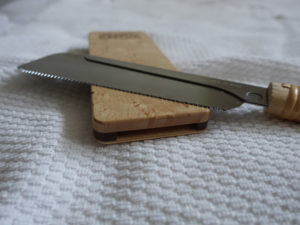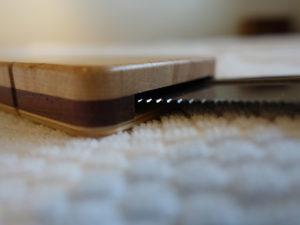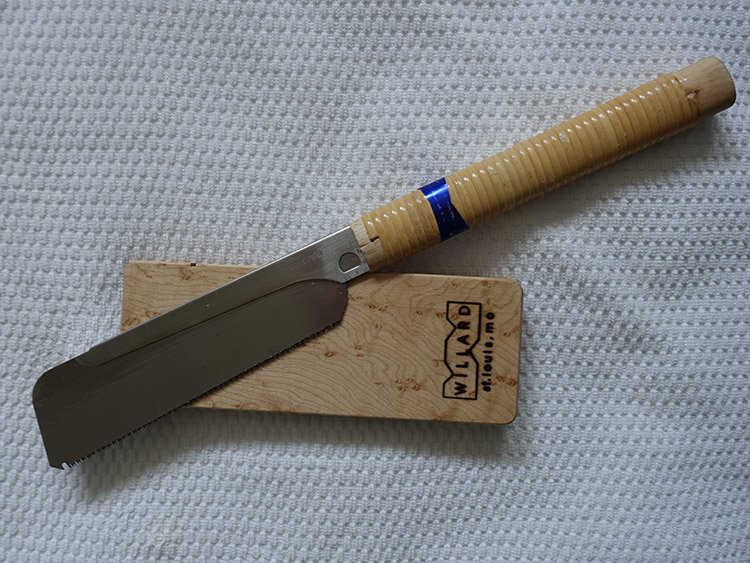I have been asked how we decide to include any particular item as a standard production piece. The fact is that there is no single answer to that question. So, let’s look at some different ways in which that could take place.
 Design driven selections happen when an object works extremely well for its intended purpose. The design certainly does not need to be our own in order to be a winner in this category. Inspired design and exceptional utility are where you find them. A good example of this quality driven inclusiveness is the Gustav Stickley designed Tabouret, or end table. Compact and unassuming, it yet provides a decently sized table top. The classic Arts and Crafts design harmonizes well with many decorating styles and can be customized in various heights and diameters.
Design driven selections happen when an object works extremely well for its intended purpose. The design certainly does not need to be our own in order to be a winner in this category. Inspired design and exceptional utility are where you find them. A good example of this quality driven inclusiveness is the Gustav Stickley designed Tabouret, or end table. Compact and unassuming, it yet provides a decently sized table top. The classic Arts and Crafts design harmonizes well with many decorating styles and can be customized in various heights and diameters.
Utility driven selections have come about when production of other items results in useful remainders which would otherwise become part of a larger waste stream. Just because wood does grow on trees is no reason to casually discard it. Not when it can become fun items like toy cars, or plainly practical ones like doorstops. Recently a friend’s request directed my attention to a problem which was solved utilizing some of this “waste” material. This may seem like a narrowly specialized challenge, but some of them are.
 I, and most woodworkers whom I know, have embraced Japanese handsaws. There are several reasons for this trend. They are shorter and more easily portable than western handsaws, and, since Japanese saws cut on the pull stroke, the blades are considerably thinner than western saws. This lends itself to precisely sawing with a thin kerf, which is desirable in fine work. This does mean that this thinner Japanese style sawblade is somewhat more fragile and prone to kinking, if say, laid upon the floor while working, and then in an inattentive moment, stepped upon. So sad. Deciding that a scabbard was the answer, I thought it through and decided that wood was an obvious material choice since the sheaths of Japanese swords (notably the Katana) have historically been of wood. This one uses a neodymium magnet as a retention device so it is not all history all the time here.
I, and most woodworkers whom I know, have embraced Japanese handsaws. There are several reasons for this trend. They are shorter and more easily portable than western handsaws, and, since Japanese saws cut on the pull stroke, the blades are considerably thinner than western saws. This lends itself to precisely sawing with a thin kerf, which is desirable in fine work. This does mean that this thinner Japanese style sawblade is somewhat more fragile and prone to kinking, if say, laid upon the floor while working, and then in an inattentive moment, stepped upon. So sad. Deciding that a scabbard was the answer, I thought it through and decided that wood was an obvious material choice since the sheaths of Japanese swords (notably the Katana) have historically been of wood. This one uses a neodymium magnet as a retention device so it is not all history all the time here.
Comfort driven design. I spend a considerable amount of time outdoors indulging various sporting activities. I like being outdoors and nearly always consider it to be time well spent. Mies van der Rohe famously said ” less is more” regarding architectural decoration, and from strictly a disciplined design point of view, I agree. Merely cluttering up a design with decorative junk serves no one. Might even be a hint that you are not confident in the rightness of your design at all. However, one place that this dictum begins to fray is in the great outdoors. For instance, after a long day of kayaking in fifty-degree water a choice of MORE damp rocks to sit on definitely results in LESS comfort. And that is pretty much how the E-Z Bob chair came to be; comfortable, compact and can be used as a canoe seat in a pinch. It even floats for easy retrieval.
Finally, and not leastly, customer driven design input! I would tell anyone that we have no illusions that because we have not thought of a solution that it can’t be a good one. We believe that client requests are valuable to us in maintaining a fresh and open perspective on what we do. Thank you for sharing your needs and ideas with us.

